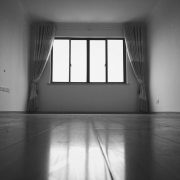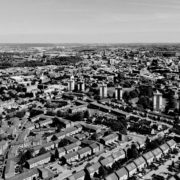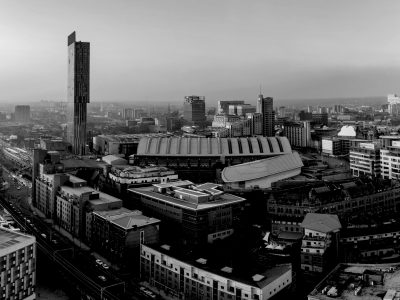The Building Safety Act (BSA), designed to deal with the ongoing cladding crisis which has plagued the country since the Grenfell Tower tragedy in 2017, has sadly fallen short of its goal – largely due to the inclusion of the ‘waterfall model’.
As many readers will know, the UK Government has failed to provide accessible funding to carry out remediation works, instead prioritising the waterfall model which assigns liability for payments to address building safety works (on unsafe buildings) onto different tiers of stakeholders.
The model is structured so the following groups are liable, in order, to pay for repairs:
- Developers who constructed the defective building that can be located
- Building owners who have a link to the original developer
- Building owners who have no links to the developer
- Leaseholders (with contributions capped at £10,000 outside London and £15,000 in London)
If one tier fails, then liability is passed down to the next level, supposedly like water cascading down a waterfall.
Although the system is completely dysfunctional, the main issue with the waterfall model is not how it works but the fact that it exists at all – its existence has simply complicated matters.
Initially, the UK Government attempted to make funding immediately available to carry out remediation works via the £5bn Building Safety Fund, however issues surrounding the Grant Funding Agreement means funding has been inaccessible for 18 months.
Since these issues came to light, the Government has prioritised the waterfall model, and by doing so has forced the responsibility and liability for payments to address building safety issues (which are a direct result of the Government’s failed building regulations) back on to innocent leaseholders and building owners, slowing down the process and leaving leaseholders in unsafe housing for longer.
Don’t go chasing waterfalls
The irony is that there is of course broad agreement that leaseholders should not be expected to pay for a crisis caused by what the UK Government has admitted is a systematic failure of building regulation – especially since Ministers have repeatedly stated that one of their primary objectives was to not make leaseholders pay for Government failures.
Yet, under the waterfall model, it is highly likely some leaseholders will be left to foot the bill.
What’s more, the UK Government has admitted that no updated impact assessment has been carried out for the BSA following the changes that saw the waterfall model introduced.
As a result, the British Government has no idea of the number of buildings where a developer cannot be located, many of which were created through Special Purpose Vehicles by developers to reduce their liability.
All of this means that liability will likely fall on the next tier of the waterfall – building owners who did not construct the defective buildings.
To tackle this issue, the UK Government included a ‘toolkit’ of legal recovery mechanisms in the BSA to allow building owners to pursue the original developers of the building.
As part of the toolkit, the Government has extended the retrospective liability period for defective buildings to 30 years under the 1984 Defective Premises Act (DPA), meaning building owners will have to prove that a building was “not fit for habitation” up to 30 years ago when the building was first signed off.
However, the DPA is not an established route to damages of the magnitude that will fall under claims for costs associated with building safety.
Building owners will therefore effectively be guinea pigs to see if this type of litigation works, which will lead to massive legal bills and years of delays, with little hope of successful cost recovery.
As this route of litigation is unlikely to succeed, building owners who can afford to pay according to the means test (but will have lost millions through litigation), will be expected to wilfully bankrupt themselves to pay to works associated with building safety.
When this unviable option is exhausted, the waterfall model will then progress to leaseholders who will have likely already hit their capped contribution limits.
This will then lead to a drastic increase in the number of ‘orphaned buildings’, where the original developer has vacated, the current building owner has no means to pay, and leaseholders cannot pay either.
In other words, the waterfall model will be expended and virtually useless after this point.
Success has many fathers…
The UK Government has attempted to improve the waterfall model through the creation of an “orphan building fund” that will be funded through a levy – supposedly this will collect £3bn from other developers over 10 years.
However, due to the fundamental flaws of the waterfall model, the number of orphaned buildings is set to increase exponentially, racking up a bill running into the tens of billions and exceeding the funds provided by Ministers.
And the UK Government has of course admitted it does not know the extent of this issue due to the lack of a proper impact assessment.
So, Whitehall and Westminster have created two possible outcomes through the Building Safety Act, neither of which provide leaseholders with the protections they were promised.
The first is the legal route, which – assuming the vast evidential requirements are somehow met – will cause years of delays and eye-watering legal costs before works to address building safety issues can even begin, leaving leaseholders trapped unsafe housing for longer.
The second is the likely failure of litigation, which will create a significant number of orphaned buildings requiring a more costly bailout than if costs had been provided upfront.
The UK Government has previously admitted there is no back up plan if the litigation route fails – most likely the process will be back to step one.
No one wants this crisis to continue longer than it has done already.
That is why, for the sake of those affected, the UK Government must adopt a ‘safety-first’ approach.
That means instead of focussing on the intricacies of the waterfall model, Ministers must provide upfront funding for remediation works by making the Building Safety Fund accessible.
The State can then use its vast resources to recoup the costs from the developers and manufacturers responsible further down the line, rather than coming after those who lease or own buildings.
Anything else is simply going to condemn even more leaseholders and residents in tower blocks to yet more years of uncertainty.

























Comments